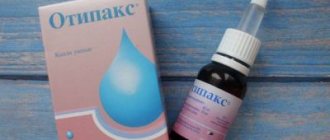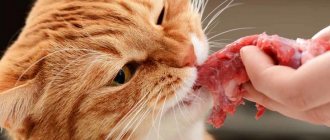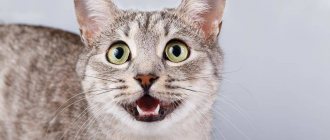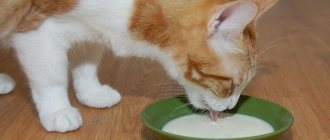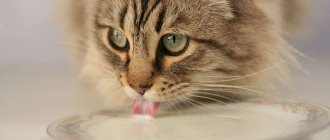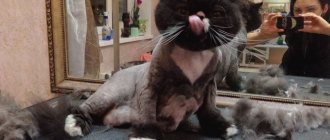Ice cream is so delicious on a summer day, but will it harm our furry pet? Can a cat eat some ice cream?
One of the most harmful foods for cats is sweets. Especially chocolate ones.
Does your cat like to eat ice cream?
The heat is at its peak and people are cooling off as best they can. However, ice cream is a treat that we enjoy all year round, not just in the summer. Our pets love to stick their noses into everything we eat. What about ice cream? Can we offer this type of cooling to a cat? Can I give my cat some ice cream?
Should it be given to kittens and adult cats?
Veterinarians and cat breeders believe that giving ice cream to pets is extremely undesirable.
But a lot still depends on the portion. If it’s a teaspoon of milky delicacy and not every day, but once every 1-2 months, then nothing bad will happen. If you abuse sweet dessert and give it in large quantities, the consequences can be sad.
The fact is that cats do not have taste buds that recognize sugar. Therefore, for the most part, they do not need it. The exception is animals weakened after a serious illness (at the recovery stage). If you give ice cream regularly, there may be problems with the kidneys, liver or other organs.
Note! If the product is natural (without milk substitute), then it is safer for your pet than if it contains artificial additives, preservatives, dyes, etc. Chocolate ice cream is especially dangerous for cats, but this will be discussed below.
Cream
Whole milk ice cream is considered less dangerous for cats, unlike other types of sweet treats. Therefore, it is still possible to give it in small quantities (1 teaspoon or dessert spoon, and no more than 1-2 times a month).
But, if the package says that it contains milk fat substitutes, it is better not to risk it and choose something else as a cool treat, for example, chilled milk.
Chocolate
Chocolate ice cream is the most dangerous type of food for cats. The fact is that it contains theobromine (a purine alkaloid found in cocoa beans and ground powder), which can cause intoxication (poisoning) in the animal’s body.
The consequences in this case can be very different - from diarrhea and digestive disorders to heart rhythm disturbances, increased anxiety, aggression and fear.
Accumulating in large quantities in the body (if chocolate ice cream is given frequently), theobromine can lead to serious changes in the pet’s health.
Fruit ice and others
Giving cats fruit ice and other types of ice cream with dyes, flavors and flavor enhancers (for example, banana, strawberry, etc.) is extremely undesirable, because they contain pure “chemistry”. Adverse reactions may include vomiting, diarrhea and refusal to eat.
At-risk groups
Just like people, there are risk groups among cats. Overheating threatens every cat without exception, the only question is the critical temperature . It is worth considering that animals individually tolerate air humidity in hot weather; some cats do better in dry air, while others do better in humid air. Animals at risk for heatstroke include those suffering from:
- Chronic diseases of the heart, vascular system, respiratory tract, hormonal system.
- Obesity, which is considered not a disadvantage or a temporary problem, but a disease.
- Natural degenerative changes (elderly animals over 7–8 years old).
A special risk group includes cats with shortened and depressed faces. Such breeds have breathing problems, and in the heat, only steamy air circulation through the respiratory tract saves the cat from overheating. Hairless cats (Sphynxes, Levkoi) are also prone to overheating, since fur not only warms or decorates, but also performs the function of thermoregulation.
Some cats have an undercoat, but regardless of its presence, there is a so-called air chamber under the cat's fur. The air in this chamber maintains a constant temperature of 38–39° , which helps the cat warm up in the cold and maintain normal body temperature in the heat. Many owners cut their cats' hair to help them cope with the heat, but in fact, short haircuts cause even more problems . A long-haired cat can be trimmed with scissors, but cutting off the fur completely is not recommended.
Note! The only case in which a clipper haircut is relevant is when there are a large number of tangles.
Owners of pets at risk need to prepare for the heat responsibly. Visit your veterinarian for advice on the best treatment options. Animals suffering from heart failure are prescribed maintenance therapy during the summer. Ask your doctor what medications you need to have on hand if your pet becomes ill and how to provide the most competent first aid.
This is interesting: How much food to give a cat
Why not?
Ice cream should not be given to cats for a number of reasons:
- The product contains a large amount of carbohydrates and sugar, which are quickly transformed into internal and subcutaneous fat covering the liver, kidneys, heart, and the walls of blood vessels. This is especially true for those owners who abuse the dosage and too often pamper their pet with a cool dessert.
- Theobromine in chocolate ice cream can cause increased blood pressure, poisoning with diarrhea/vomiting, and increased heart rate. In rare cases, the case ends in death.
- If you give ice cream too often and in large quantities (even natural and creamy), this can lead to a weakening of the animal’s immunity and its complete dysfunction. Allergic reactions are also possible. Especially if the product is based on chemical dyes and flavor enhancers. And skin diseases, including lichen and baldness.
- Another danger is urolithiasis. When a cat's digestive system is forced to process sugar and other harmful components, in an attempt to cleanse itself, all body systems begin to work literally to wear out. Therefore, urolithiasis or kidney failure may develop as long-term consequences.
Also, when overusing dairy desserts, cats develop diabetes and vision problems, including blindness.
Important! Giving your cat ice cream occasionally and in small quantities is not as dangerous as chocolate or fruit ice cream. But veterinarians still do not advise doing this. After all, the owner acts at his own peril and risk. Kittens and old/frail animals are especially at risk.
Need for sugar
Many cat owners note that their pets gobble up chocolate, condensed milk or cake with great pleasure. Animals are often treated to candy from the owner’s table, in the belief that they simply adore confectionery.
In fact, cats do not feel the taste of sweets at all, since they do not have receptors on the tongue, and on a physical level they cannot like desserts. Moreover, animals do not have certain enzymes that are responsible for digesting sugars. As a result, any sweetness will only harm the cat. Therefore, every owner must understand that under no circumstances should you feed your pet sweet foods: give the cat ice cream, cakes, chocolates.
What to do if you eat it?
If a cat has eaten a small amount of ice cream (for example, cream) nothing bad will happen. In most cases, pets do not have any reaction at all.
But it all depends on the animal’s body: in case of allergies or intolerance to components, signs of intoxication may occur (vomiting, diarrhea, weakness, etc.). Or behavioral disorders (fear, panic, anxiety, aggression). The latter is relevant when eating chocolate or fruit ice cream.
The only thing that can be done in this case is to give the pet an enterosorbent (dissolve 1-2 tablets of activated carbon or Enterosgel in water). The medicine should be poured from a syringe without a needle into the corner of the animal’s mouth. If necessary, it is recommended to repeat the procedure, but not less than after 1.5-2 hours.
And in order for harmful components to be eliminated from the fluffy’s body faster, you need to give as much clean water as possible. If your pet refuses to drink, you will have to force the liquid in through a syringe. But you need to act carefully and affectionately, without causing severe anxiety to the animal.
There is only one way to prevent intoxication - do not give ice cream to your cat. Especially if negative reactions have already been observed. Therefore, the product should not lie openly on a table or any other place where the pet has access.
Diet
Cats naturally lose their appetite in hot weather, which is not a concern for you or your family. The pet does not need to be persuaded to eat, much less force-fed. At high temperatures, a cat can remain absolutely hungry for about a day, a kitten for no more than 12 hours . Naturally, your task is to make sure that the cat drinks enough water and visually looks healthy.
Meal times should be moved to earlier in the morning or late evening. It is advisable, during extremely high temperatures, to switch the cat to a single meal and feed the pet in the evening. At night, when the air temperature drops, the cat needs energy to stay warm. During the day, it will be difficult for the patient to cope not only with the heat, but also with digesting food.
With a natural diet, all heavy foods should be excluded from the diet, and the amount of grains should be kept to a minimum . Beef, pork (if you give it to a cat), lamb should be replaced with rabbit, chicken or quail meat. Remove food from the bowl as soon as the cat is satisfied, because in the heat, it will take several hours for the food to disappear and there is a risk of poisoning.
Important! When feeding dry food, carefully measure the amount of food per meal and do not leave pellets in the bowl. Feed deteriorates due to oxidation by oxygen; in hot weather this process occurs much faster.
Why do they freeze after trying?
On the Internet (including YouTube) you can find videos in which cats behave strangely after eating ice cream - throwing their heads back, suddenly freezing in one place, or showing signs of anxiety.
And there is a completely reasonable explanation for this: a cold product affects the language receptors and nervous system of the animal, hence such reactions.
In addition, if the composition contains theobromine (chocolate ice cream) or chemical components (dyes, flavors, etc.), this may have a negative effect on the digestive system or cause allergic reactions.
How to replace a sweet treat?
Ice cream for cats has not yet been invented. But if you wish, you can always find a worthy replacement. Here is one of the delicious and healthy recipes:
- Take natural yogurt in the required proportions, for example 100 ml (preferably homemade, without sugar and dyes).
- Add a couple of teaspoons of kefir and cottage cheese to it.
- Mix the ingredients thoroughly and place in the freezer for 30 minutes.
Cool treat for cats is ready!
Chilled milk or kefir will also come in handy in the summer heat. The pet will definitely like it and will not cause negative reactions from the body.
So can cats eat ice cream?
We say no! This sweet food is meant for people after all. Especially chocolate!
- Treating your cat to sweets can cause serious complications.
- It can also contribute to the formation of tooth decay and serious periodontal disease, as well as obesity - a disease of the 21st century not only in humans.
However, when it comes to ice cream for cats and products that are safe for cats and the ones they like - you can do it, but it's worth remembering that there are other, less risky ways to cool your pet in the summer.
